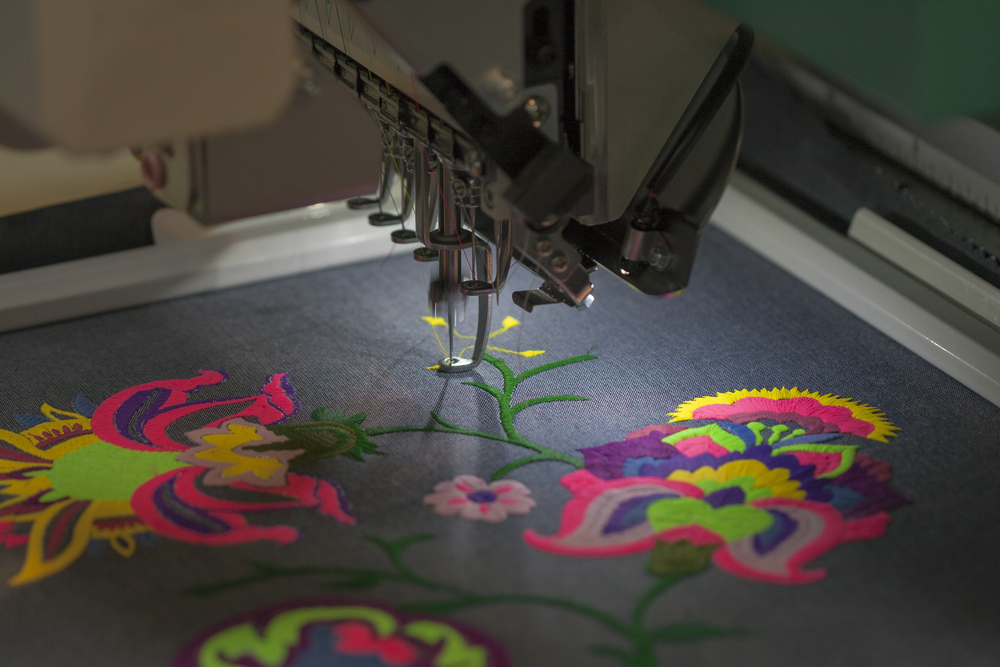Understanding the Embroidery Digitizing Process: Your Ultimate Overview
Embroidery digitizing is a careful craft that needs accuracy and knowledge to convert complex layouts right into digital layouts for device needlework. As craftsmens embark on this journey to master the needlework digitizing procedure, a thorough understanding of the basics establishes the foundation for quality. However, past the basic expertise lies a realm of innovative software program, specialized devices, and nuanced methods waiting to be discovered. By delving right into the subtleties of digitizing, one can unlock a world of creative possibilities and elevate their needlework projects to new heights.

Recognizing Embroidery Digitizing Basics
Embroidery digitizing fundamentals create the foundation upon which detailed styles are equated into machine-readable formats for precise stitching. This initial action in the embroidery digitizing procedure is vital for making sure that the final embroidered item is a loyal representation of the initial style. Understanding needlework digitizing essentials involves grasping essential concepts such as stitch types, sew instructions, thickness, underlay, and draw settlement.
Sew kinds play an important function in identifying the visual and textural end result of the embroidered style. By selecting the suitable stitch kind, whether it be satin, fill, or running stitch, digitizers can attain the preferred impact and enhance the general high quality of the needlework. Furthermore, stitch direction affects the circulation and dimension of the layout, while thickness determines the spacing and insurance coverage of the stitches.
Additionally, rug sewing supplies security to the layout by securing the fabric and protecting against distortion throughout the embroidery procedure. Draw settlement is one more crucial factor to consider to neutralize the natural tendency of fabric to agreement when sewn. Mastering these embroidery digitizing fundamentals is basic for creating professional-quality embroidered items.
Selecting the Right Digitizing Software
Selecting the ideal digitizing software application is a vital choice that dramatically affects the effectiveness and high quality of the embroidery digitizing process. Digitizing for Embroidery. When choosing the ideal digitizing software program, it is vital to think about factors such as the intricacy of designs you intend to develop, the user-friendliness of the software application, the level of client assistance provided, and the compatibility with your needlework device
There are various digitizing software application choices offered on the market, ranging from fundamental programs for newbies to innovative software application for specialist digitizers. Some prominent choices consist of Wilcom EmbroideryStudio, Hatch Needlework Software Program, and PulseID. These software program packages supply a variety of devices and attributes to help you develop elaborate layouts effortlessly.
Before making a choice, it is a good idea to discover the various software program options with cost-free trials or demos to identify which one finest fits your requirements. Additionally, reading testimonials and looking for referrals from knowledgeable digitizers can provide important insights into the staminas and weak points of each software (Digitizing for Embroidery). By thoroughly reviewing your requirements and comparing the attributes of different digitizing software, you can make an informed selection that improves your embroidery digitizing operations
Digitizing Devices and Strategies

Optimizing Style Setup for Needlework
Understanding the complexities of design settings is fundamental in accomplishing ideal lead to the embroidery digitizing procedure, structure upon the structure laid by comprehending digitizing devices and methods. When maximizing layout settings for embroidery, it is vital to take into consideration factors such as stitch kind, density, rug, pull settlement, and registration. Sew type option affects the overall feel and look of the design, with options like satin, fill, and running stitches using various appearances and results. Density refers to the spacing and density of stitches, affecting the layout's protection and resilience. Proper underlay sewing gives stability and stops textile distortion, particularly for intricate layouts or on stretchy materials. Draw settlement readjusts for material stretch throughout stitching, guaranteeing exact layout duplication. Registration settings line up different elements of the design properly, preserving overall design integrity. By fine-tuning these design setups, embroiderers can boost the high quality and accuracy of their embroidered developments.

Troubleshooting Common Digitizing Issues
When coming across usual digitizing concerns throughout the embroidery process, it is vital to recognize the source and carry out reliable options without delay. One common problem is stitch thickness problems, where stitches might be also dense, causing the textile to tighten, or also thin, causing spaces in the layout. Readjusting the stitch density setups in the digitizing software program can help fix this concern.
Another regular obstacle is thread breaks during the needlework process. This can take place because of numerous reasons such as inaccurate tension settings, plain needles, or utilizing low-grade thread. Guaranteeing appropriate maintenance of the needlework maker, including routine needle changes and stress changes, can lessen the event of string breaks.
In addition, layout registration errors can lead to misaligned elements within the needlework design. Inspecting the layout positioning in the digitizing software and making essential visit the site changes prior to sewing can help in preventing this concern. By resolving these usual digitizing concerns quickly and properly, you can guarantee a smoother embroidery process and premium completed products.
Verdict
To conclude, grasping the needlework digitizing procedure needs a strong understanding of the fundamentals, the ideal choice of software program, and expertise of best site tools and strategies. Maximizing layout setups and troubleshooting usual digitizing issues are crucial steps in guaranteeing top notch needlework outcomes. By adhering to these steps faithfully, one can achieve accuracy and effectiveness in the digitizing process.